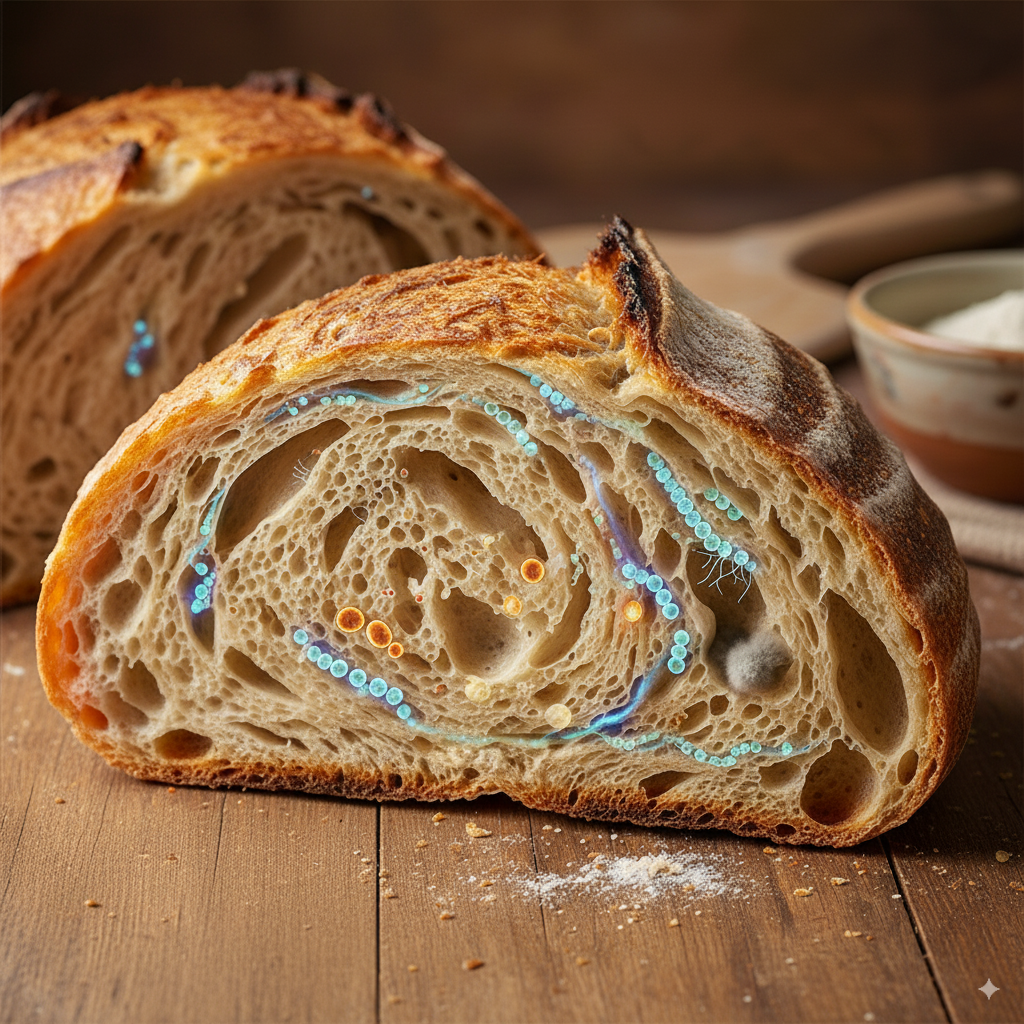Sourdough Fermentation Activities
In addition to the well-known fermentation of the dough that produces carbon dioxide and causes the dough to rise, there are a few lesser-known fermentation activities that happen during sourdough making:
-
Proteolysis: The bacteria in sourdough produce enzymes that break down proteins in the dough, a process known as proteolysis. This breakdown of proteins can contribute to the development of flavor and aroma in the bread, as well as affect the texture of the finished loaf.
-
Lipolysis: Lipolysis is the breakdown of fats into fatty acids and glycerol. While not as important in sourdough bread making as proteolysis, lipolysis can still contribute to the development of flavor and aroma in the dough.
-
Prebiotic production: Prebiotics are compounds that feed the beneficial bacteria in our gut, promoting good digestive health. During sourdough fermentation, the bacteria in the dough produce prebiotics such as fructo-oligosaccharides and galacto-oligosaccharides.
-
Synthesis of vitamins: Sourdough fermentation can also result in the synthesis of vitamins such as B vitamins and vitamin K. These vitamins can contribute to the nutritional value of the bread.
-
B Vitamins: Sourdough fermentation can enhance the production of various B vitamins, including thiamin (B1), riboflavin (B2), niacin (B3), folate (B9), and vitamin B6. These vitamins play essential roles in energy metabolism, nerve function, red blood cell production, and overall cellular health.
-
Vitamin K: Sourdough fermentation can also result in the synthesis of vitamin K. Vitamin K is important for blood clotting and bone health. The presence of vitamin K in sourdough bread can contribute to meeting our dietary needs for this essential vitamin.
-
The synthesis of these vitamins occurs through the metabolic activities of the microorganisms present in the sourdough starter. The specific strains and species of microorganisms can vary, and different combinations can yield different levels of vitamin production. However, it’s important to note that the vitamin content of sourdough bread can also be influenced by factors such as the type of flour used and the fermentation conditions.
-
Overall, there are many different processes happening during sourdough fermentation that contribute to the development of flavor, aroma, texture, and nutritional value in the finished bread. While the process may seem simple on the surface, there is a lot of complexity happening behind the scenes.
